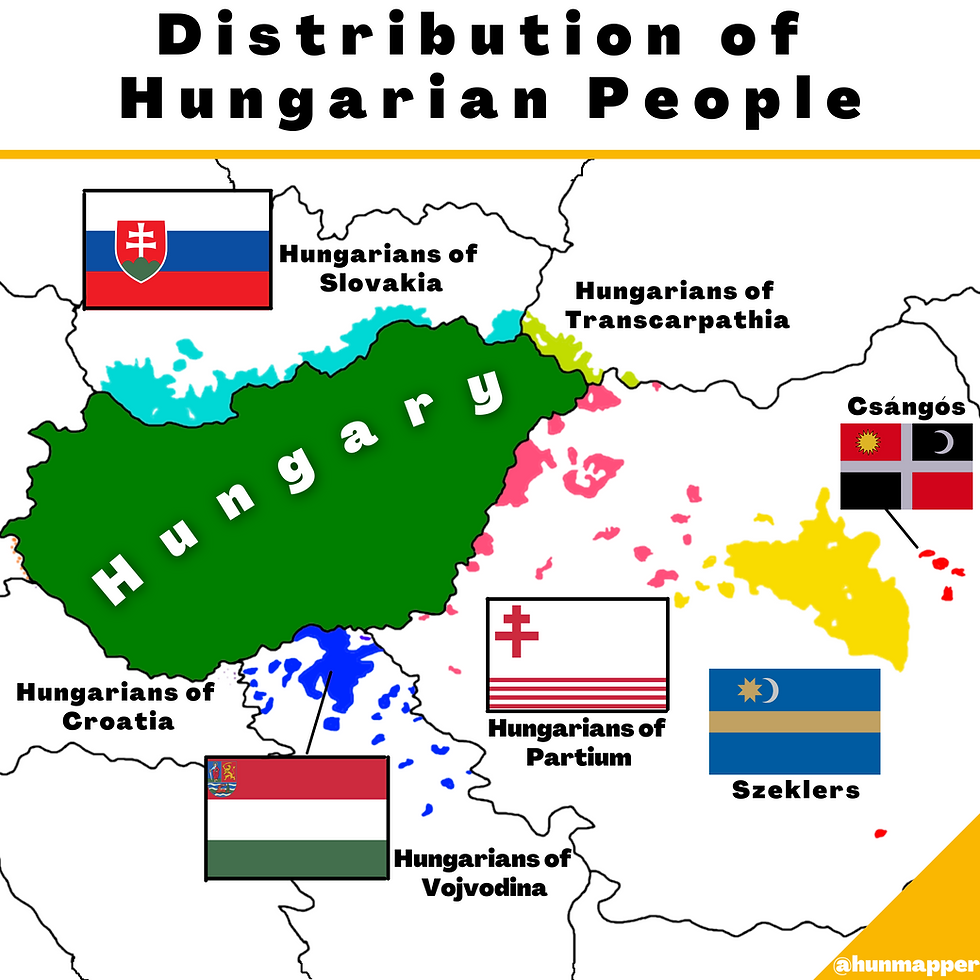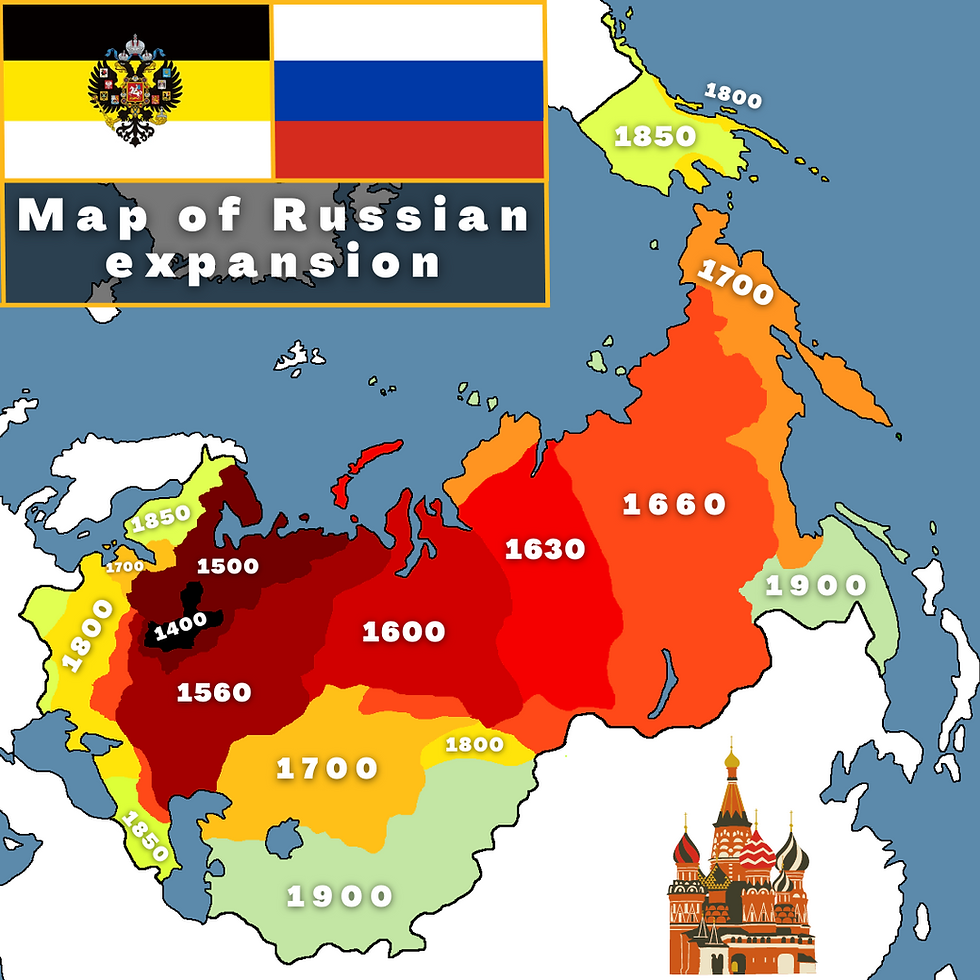Distribution of Hungarian People
- hunmapper

- Jul 16, 2021
- 3 min read
Updated: Jul 23, 2021
In consequence of the Treaty of Trianon in 1920 millions of Hungarians found themselves separated from Hungary. Many of them live on the other side of the Hungarian border however for example the Szeklers (Székelys) form an "island' in Central Romania.

Hungarians of Slovakia (szlovákiai/ felvidéki magyarok)
According to the 2011 Slovak census, 458,467 people (or 8.5% of the population) declared themselves Hungarians, while 508,714 (9.4% of the population) stated that Hungarian was their mother tongue. Hungarians in Slovakia are concentrated mostly in the southern part of the country, near the border with Hungary. They form the majority in two districts: Komárom=Komárno and Dunaszerdahely=Dunajská Streda.
Hungarians of Vojvodina (vajdasági/ délvidéki magyarok)
According to the 2011 census, there are 253,899 ethnic Hungarians composing 3.5% of the population of Serbia. Hungarian is listed as one of the six official languages of Vojvodina, which is an autonomous province.

Hungarians of Partium (partiumi magyarok)
Partium (meaning "parts") historically was a region that belonged to the Principality of Transylvania in the 16th - 17th centuries but was not part of Transylvania proper. Today the name "Partium" refers to the area between the Hungarian - Romanian border and Transylvania proper. Today the region has a significant Hungarian population most notably around the Hungarian border.

Szeklers (Székelyek)
Since the Hungarian conquest of the Carpathian Basin in 895 the Szeklers played a very important role in defending Hungary's eastern frontier. Szeklers, who were famous warriors stood against the Pechenegs, Cumans, Mongols, Turks, Russians and Romanians. Today there are around 700,000 Szeklers. It is very hard to estimate their exact number because at the 2011 Romanian census they had the chance to identify themselves as either Szeklers or Hungarians and more than 95% chose the latter option. Szeklers are majority in the counties of Hargitha (85%) and Covasna=Kovászna (74%). 38% of the population of Mures=Maros county is also Szekler. Today the Szekler National Council (Székely Nemzeti Tanács) demands autonomy for the region, however yet the Romanian government refused to.

Csangos (Csángók)
The name "Csángó" most probably comes from the Hungarian verb csángál meaning "wander, as if going away". The reason why they got this name is that they left the Hungarian Homeland and found a new home on the other side of the Carpathian Mountains. The first Csángós might have been left behind after the Hungarian Conquest of the Carpathian basin to guard the eastern frontier. Then, in the next centuries several Hungarians were forced to leave Hungary for different (mostly political) reasons. A significant number of Székelys joined them after the Massacre at Madéfalva which was a mass murder committed by the Habsburg Army against the Székelys in 1764.
According to the most recent research executed between 2008 and 2010 by Vilmos Tánczos, a famous Hungarian folklorist, there has been a sharp decline in the total number of Csángó-speaking people in Eastern Romania. Tánczos set their number to roughly 43,000 people. Moreover, he found out that the most archaic version of Csángó language, the Northern Csángó was known and regularly used by only some 4,000 people, exclusively the older generation above the age of 50. It can be said, therefore, that the Csángó Hungarian dialect is in high risk of extinction. In fact, when applying the UNESCO Framework to measure language vitality, this dialect fits the category of "Severely Endangered".

In the Csángó flag both Székely symbols, the Sun and the Moon can be found and the red and black are also considered as Székely colors.




Comments